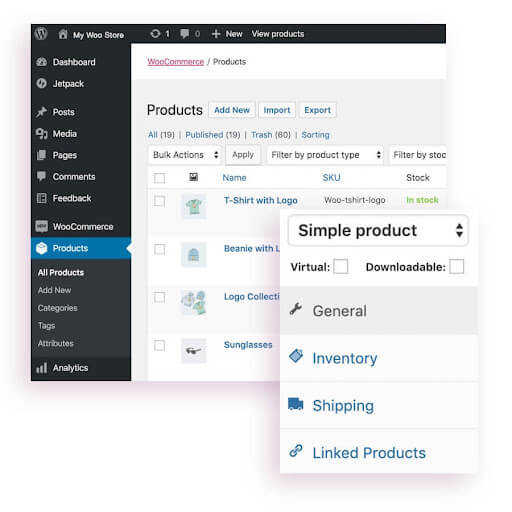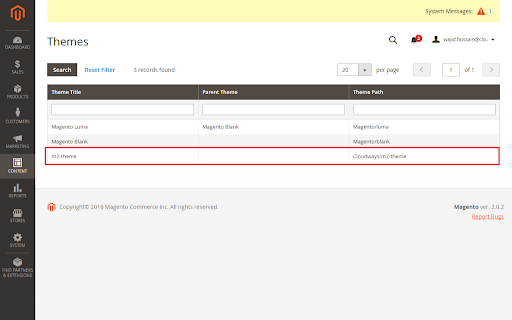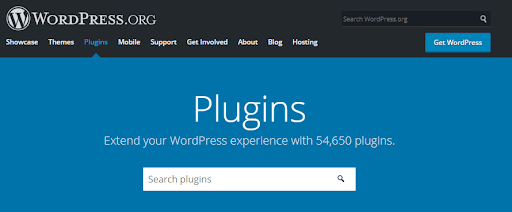WooCommerce vs Magento- Which Should You Choose for Your Retail Business?

Table of contents
- WooCommerce vs Magento: Features
- WooCommerce vs Magento: Ease of Use
- WooCommerce vs Magento: Customizations
- WooCommerce vs Magento: Plugins
- WooCommerce vs Magento – SEO and Marketing capabilities
- Conclusion
If you want to build a web store, chances are you’re looking at one of the two best solutions- Magento- Woocommerce. Over 200,000 of the internet’s leading sites have a web store, WooCommerce and Magento.
Together, these platforms account for more than half of leading e-commerce stores. WooCommerce has a quarter of all e-commerce.
Let us compare Magento to WooCommerce, contrasting their strengths and weaknesses and the differences you need to know.

Let us compare Magento to WooCommerce, contrasting their strengths and weaknesses and the differences you need to know.
Magento and WooCommerce are web commerce platforms that fully support online sales. Each can be scaled to power massive sales operations. These need not be confined only to the web, but we can extend this to both platforms and integrate it into brick-and-mortar stores and combined inventory management. Both platforms are open-source and have been around for almost a decade, and their underlying code makes it easy for anyone to inspect or modify. Both platforms have corporate owners, Adobe and Automattic.
Adobe offers Magento Commerce as a paid version of the platform, while Automattic produces paid plugins that we can use with WooCommerce.

Source- Magento
Magento and WooCommerce follow fundamentally distinct patterns. WooCommerce is a WordPress plugin that fits neatly into the thriving WordPress open-source content ecosystem, connecting you to the WordPress environment.
On the other hand, Magento is a stand-alone solution, similar to Shopify in this regard.
Magento Open Source is a free platform primarily used in smaller stores and start-ups. Adobe hopes that as stores increase, they’ll pay for the more comprehensive Magento Commerce (also known as Adobe Commerce). But Magento Open Source is only available as a self-hosted package.

Source- WooCommerce
Magento/Adobe Commerce can run on your server, or you can choose Magento Hosted Cloud to have Adobe host it for you. It gives you more flexibility, but it is more complicated than WooCommerce and has more strict requirements – just one reason why Magento has a prominent notion of being harder to deploy.
WooCommerce can be launched on a 2GB server because it is lighter than the Magento eCommerce platform. Also, most hosting providers allow us to install it with a single click. On the other hand, Magento requires many more resources and SSH integration to install the system.
WooCommerce vs Magento: Ease of Use
Most eCommerce store owners are not programmers, so they are looking for accessible eCommerce platforms that are effortless to set up and low-cost options to handle these specialties. Let’s see which of the two platforms, WooCommerce and Magento, offers more accessibility.
WooCommerce
WooCommerce is more comfortable to use than Magento. The installation is uncomplicated, and you can install it with a single click.
WooCommerce is a WordPress plugin, so we have to install WordPress first and then WooCommerce. Everything is easy and self-explanatory.
We can install WooCommerce by going to Dashboard>Plugins>WooCommerce.
WooCommerce comes with a setup wizard, and if you are using the best WooCommerce hosting, such as Cloudways, you can install it within a few seconds.
Magento
Magento, used by many e-commerce platforms, is a compelling platform. It helps you manage and create multiple store views and multi-sites for free. It has many highly sought-after features to improve the customer experience.
WooCommerce vs Magento: Customizations
Store owners frequently want to customize their eCommerce store’s front. They may want to change the layout, add a slider, or remove a category field. Both WooCommerce and Magento offer this capability. But which one provides it best?
Let’s find out
WooCommerce
WooCommerce can easily modify the theme format from the ‘Editor’ tab. All you need to do is, open the Dashboard and click Advanced > Editor.
This way, store owners can easily modify the front layout of their website. Another fantastic feature of WooCommerce is that it lets users build their store the way they want, with the help of the page builder feature.

Using Divi to Build WooCommerce e-store
Magento
Modifying Magento can be challenging as it isn’t as easy as WooCommerce. In Magento, you should first declare your theme in the Magento folder.
Once the theme is set, we must enable it by going to Content> Design > Theme.

WooCommerce vs Magento: Plugins
The development teams of all e-commerce sites understand that no eCommerce platform is perfect and why third-party developers create plugins and extensions for them. Let’s see which one has better plugins than WooCommerce and Magento.
WooCommerce
WooCommerce has many plugins available that help resolve basic and complex issues. Whether to optimize images, add product rules, or optimize shipping, WooCommerce plugins will let you do it all.
Many WooCommerce extensions are free to install on your eCommerce store, but you can also download paid plugins if you want premium features.

Magento
Magento also offers multiple extensions that we can install on the eCommerce site to help tackle tasks quickly. These extensions are available as free and paid extensions. As of the writing of this article, there are around 4,800 Magento extensions available. Community developers build these for sales, marketing, and even Content and customizations.

WooCommerce vs Magento – SEO and Marketing capabilities
WooCommerce
Magento has many built-in SEO capabilities. It helps avoid content duplication with canonical URLs and other techniques. Using Magento, we can customize the home category and cart pages’ titles and anchor text for navigation links.
Features like rich snippets, Page Builder, rich XML sitemap makes it easy for store owners to build an excellent frontend experience, earn high visibility and search engine rankings and map site contents to search engines.
Magento’s PWA Studio helps build a mobile website with an app-like interface. Progressive web apps or PWAs will help you achieve mobile loading time in under 2 seconds and enable fast checkout experiences.
Conclusion
Perfect For Small Businesses: Woocommerce
We chose WooCommerce over Magento because
- WooCommerce has a simple GUI that any non-techie can understand and learn.
- Because of the availability of the builder plugin, there is a need for customization from the source code because
- It has a variety of free plugins available.
- It takes fewer resources to manage than Magento.
Ideal for Medium to Large Enterprise Businesses: Magento
- Magento is a highly secure platform with advanced built-in cache features.
- It has many built-in features, so it does not need as many extensions as WooCommerce.
- We can build our own Magento themes from scratch
- It has a broad range of free extensions and themes available
- It offers a robust framework for order management and is highly reliable
Tags: Magento, Woocommerce
![Blog-[x]cube LABS](https://d6fiz9tmzg8gn.cloudfront.net/wp-content/uploads/2016/06/blog_banner.jpg)

